 W
WAl-Quds Arab Capital of Culture was the name given to Arab Capital of Culture programme in 2009. The programme, organised by UNESCO and the Arab League, is designed to promote Arab culture and encourage cooperation in the Arab world. The 2009 event was the 14th programme since its establishment in 1996.
 W
W"And did those feet in ancient time" is a poem by William Blake from the preface to his epic Milton: A Poem in Two Books, one of a collection of writings known as the Prophetic Books. The date of 1804 on the title page is probably when the plates were begun, but the poem was printed c. 1808. Today it is best known as the hymn "Jerusalem", with music written by Sir Hubert Parry in 1916. The famous orchestration was written by Sir Edward Elgar. It is not to be confused with another poem, much longer and larger in scope, but also by Blake, called Jerusalem The Emanation of the Giant Albion.
 W
WJerusalem Day is an Israeli national holiday commemorating the reunification of Jerusalem and the establishment of Israeli control over the Old City in the aftermath of the June 1967 Six-Day War. The day is officially marked by state ceremonies and memorial services.
 W
WJerusalem's population size and composition has shifted many times over its 5,000 year history. Since medieval times, the Old City of Jerusalem has been divided into Jewish, Muslim, Christian, and Armenian quarters.
 W
WDraped Seated Woman 1957–58 is a bronze sculpture by the British artist Henry Moore, cast in an edition of seven in the 1950s. The sculpture depicts a female figure resting in a seated position, with her legs folded back to her right, her left hand supporting her weight, and her right hand on her right leg. The drapery emphasises the female figure, but the facial features are abstracted and barely picked out.
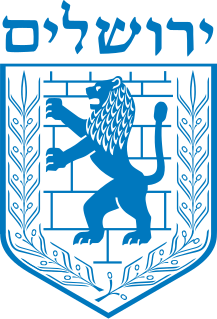 W
WThe Emblem of Jerusalem is the official symbol of the city of Jerusalem. The emblem's main figure is a Lion, shown rampant, which represents the "lion of Judah", the symbol of the Tribe of Judah and later the Kingdom of Judah, whose capital was Jerusalem. The emblem background represents the Walls of Jerusalem and the Western Wall, and the olive branch represents the quest for peace. The inscription above the crest is the Hebrew word for Jerusalem (Yerushalayim).
 W
WThe municipal flag of Jerusalem is based on the flag of Israel. It features two horizontal blue stripes reminiscent of the tallit. In the center are Jerusalem's municipal emblem, which consists of a shield with the lion of Judah superimposed on a stylized background representing the kotel, flanked on either side with olive branches. The word ירושלים appears above the shield. A vertical variant is sometimes used during ceremonial functions.
 W
WGerard Behar Center is a major arts centre in Jerusalem, Israel, for independent theatre, dance, and musical productions, children's shows, art exhibitions, artist workshops, and festivals. In 2010 the center hosted over 900 events with attendance in excess of 263,600 participants. The center includes two theatres and is home to two dance companies, Kolben and Vertigo.
 W
WHutzot Hayotzer, is an arts and crafts lane in Jerusalem, Israel, located west of the Old City walls. Its name means "the potter's section" (compound) or "the potter's hedge" in Hebrew and Aramaic.
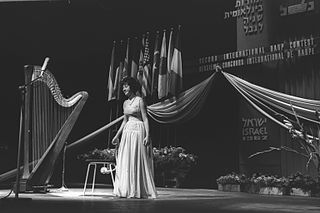 W
WThe International Harp Contest in Israel is a harp competition. Founded in 1959 by Aharon Zvi Propes in the city of Jerusalem, it was the first competition for the harp in the history of the instrument.
 W
WJerusalem is a 2013 documentary film about the ancient city of Jerusalem. It was produced by Cosmic Picture and Arcane Pictures and distributed by National Geographic Cinema Ventures in IMAX and giant screen theatres.
 W
WJerusalem Khan Theatre is a repertory theatre based in Jerusalem, Israel. The theatre is located near the Jerusalem Railway Station, in an old caravanserai building.
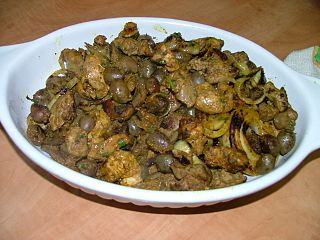 W
WJerusalem mixed grill is a grilled meat dish considered a specialty of Jerusalem. It consists of chicken hearts, spleens and liver mixed with bits of lamb cooked on a flat grill, seasoned with onion, garlic, black pepper, cumin, turmeric, olive oil and coriander.
 W
W"Jerusalem of Gold" is an Israeli song written by Naomi Shemer. Often contrasted with the official anthem Hatikva, the original song described the Jewish people's 2,000-year longing to return to Jerusalem. Shemer added a final verse after the Six-Day War to celebrate Jerusalem's re-unification.
 W
WThe Jerusalem Open House for Pride and Tolerance is a non profit organization, founded in 1997, with a community center serving people of all sexual orientations and gender identities. While reaching out with their message of equality and acceptance to all people in Jerusalem and abroad, their main focuses are community building, providing humanitarian services and promoting social change. They work to create a safe, pluralistic and egalitarian Jerusalem that is welcoming to all of its inhabitants, communities and visitors, regardless of sexual orientation or gender identity.
 W
WThe Jerusalem Post is a broadsheet newspaper based in Jerusalem, founded in 1932 during the British Mandate of Palestine by Gershon Agron as The Palestine Post. In 1950, it changed its name to The Jerusalem Post. In 2004, the paper was bought by Mirkaei Tikshoret, a diversified Israeli media firm controlled by investor Eli Azur. In April 2014, Azur acquired the newspaper Maariv. The newspaper is published in English and previously also printed a French edition.
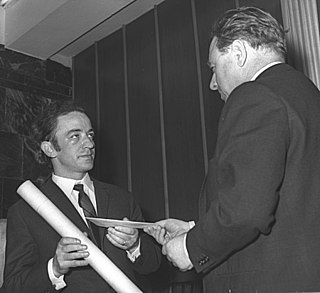 W
WThe Jerusalem Prize for the Freedom of the Individual in Society is a biennial literary award given to writers whose works have dealt with themes of human freedom in society.
 W
WThe Jerusalem Theatre is a centre for the performing arts in Jerusalem. The theatre opened in 1971. The complex consists of the Sherover Theatre, which seats 950, the Henry Crown Symphony Hall with 750 seats, the Rebecca Crown Auditorium, with 450 seats, and the Little Theatre with 110 seats. Changing art exhibits are held in the main foyer and other spaces in the building, and a restaurant and bookshop operate on the ground floor.
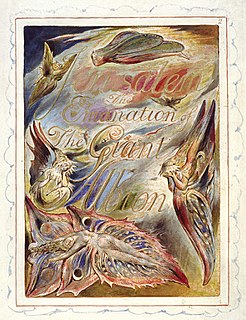 W
WJerusalem, subtitled The Emanation of the Giant Albion, is the last, longest and greatest in scope of the prophetic books written and illustrated by the English poet, artist and engraver William Blake. Etched in handwriting, accompanied by small sketches, marginal figures and huge full-plate illustrations, it has been described as "visionary theatre". The poet himself believed it was his masterpiece and it has been said that "of all Blake's illuminated epics, this is by far the most public and accessible". Nonetheless, only six copies were printed in Blake’s lifetime and the book, like all of Blake’s prophetic works, was all but ignored by his contemporaries.
 W
WKugel Yerushalmi, also known as Jerusalem kugel, or Galilean kugel, is an Israeli kugel dish originating from the local Jewish community of Jerusalem in the 1700s.
 W
WThis is a list of songs about Jerusalem, including major parts of the city such as individual neighborhoods and sections. Religiously significant to all three Abrahamic religions for centuries and politically controversial since the inception of the Zionist movement, Jerusalem has been artistically associated with widely varied concepts. There are many songs about Jerusalem from various time periods, especially nationalistically-themed songs from the time of the Six-Day War, when East Jerusalem passed from Jordanian control to Israeli.
 W
WThe Monument to the children in Yad Vashem is located at Yad Vashem, Israel. It was erected in 1987 in remembrance of children killed during the reign of the Nazi Party in the German Reich.
 W
WNames of Jerusalem refers to the multiple names by which the city of Jerusalem has been known and the etymology of the word in different languages. According to the Jewish Midrash, "Jerusalem has 70 names". Lists have been compiled of 72 different Hebrew names for Jerusalem in Jewish scripture.
 W
WJerusalem syndrome is a group of mental phenomena involving the presence of religiously-themed obsessive ideas, delusions, or other psychosis-like experiences that are triggered by a visit to the city of Jerusalem. It is not endemic to one single religion or denomination but has affected Jews, Christians, and Muslims of many different backgrounds. It is not listed as a recognised condition in the Diagnostic and Statistical Manual of Mental Disorders or the International Classification of Diseases.
 W
W